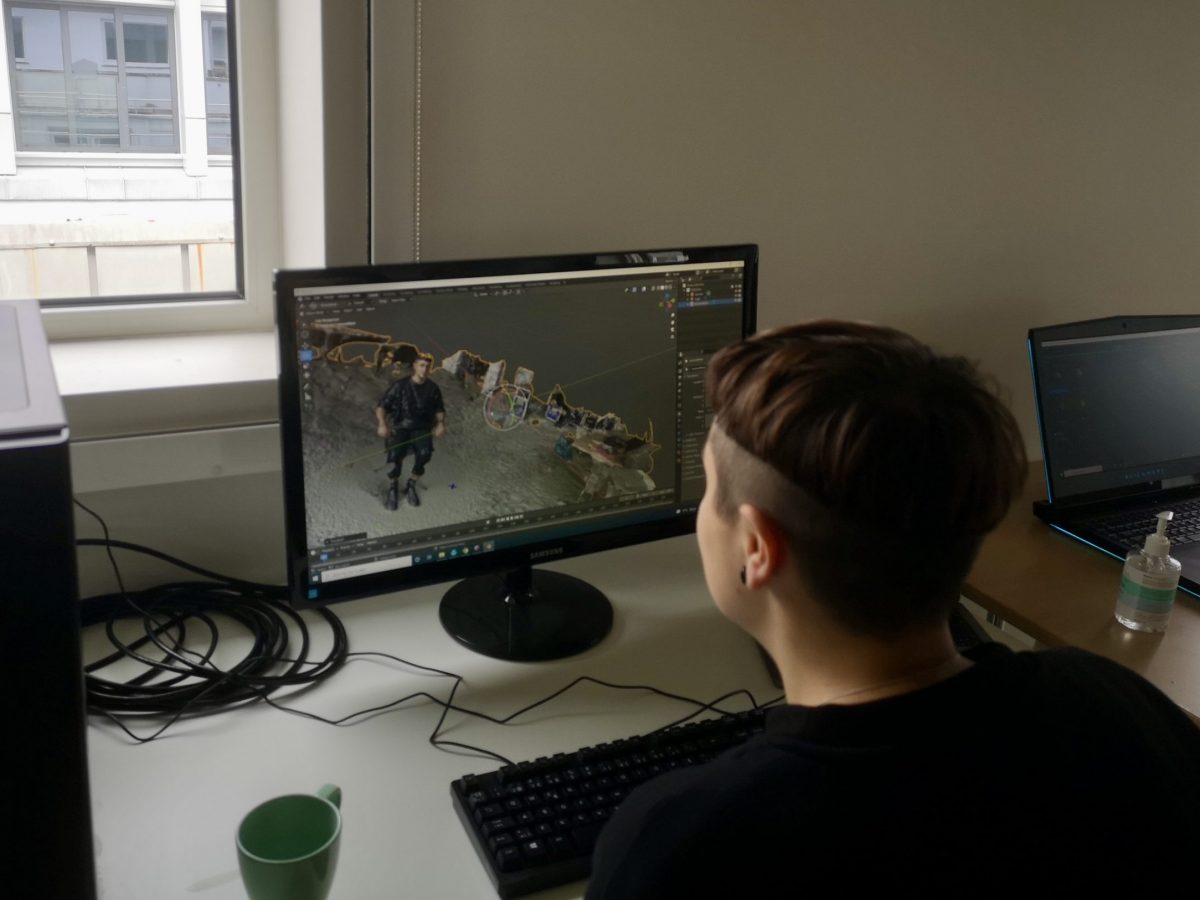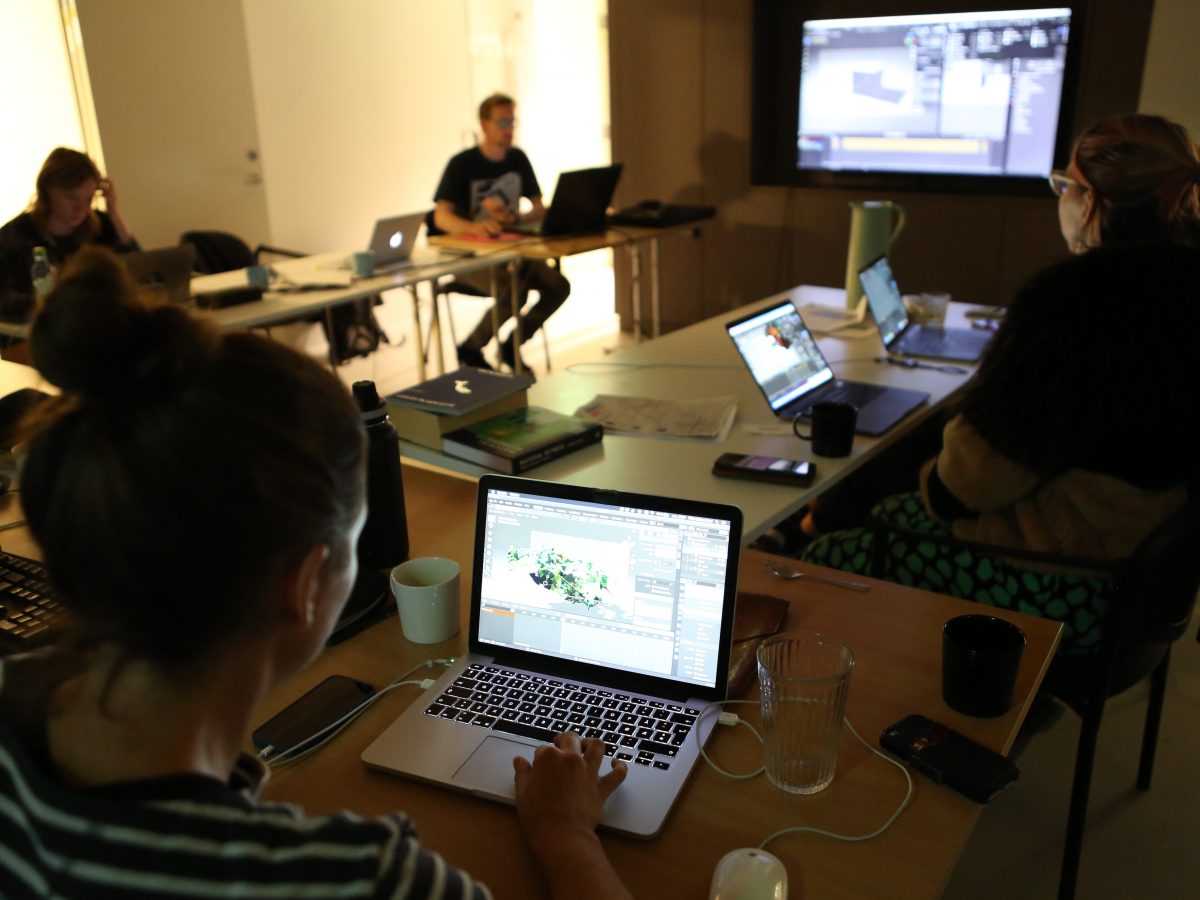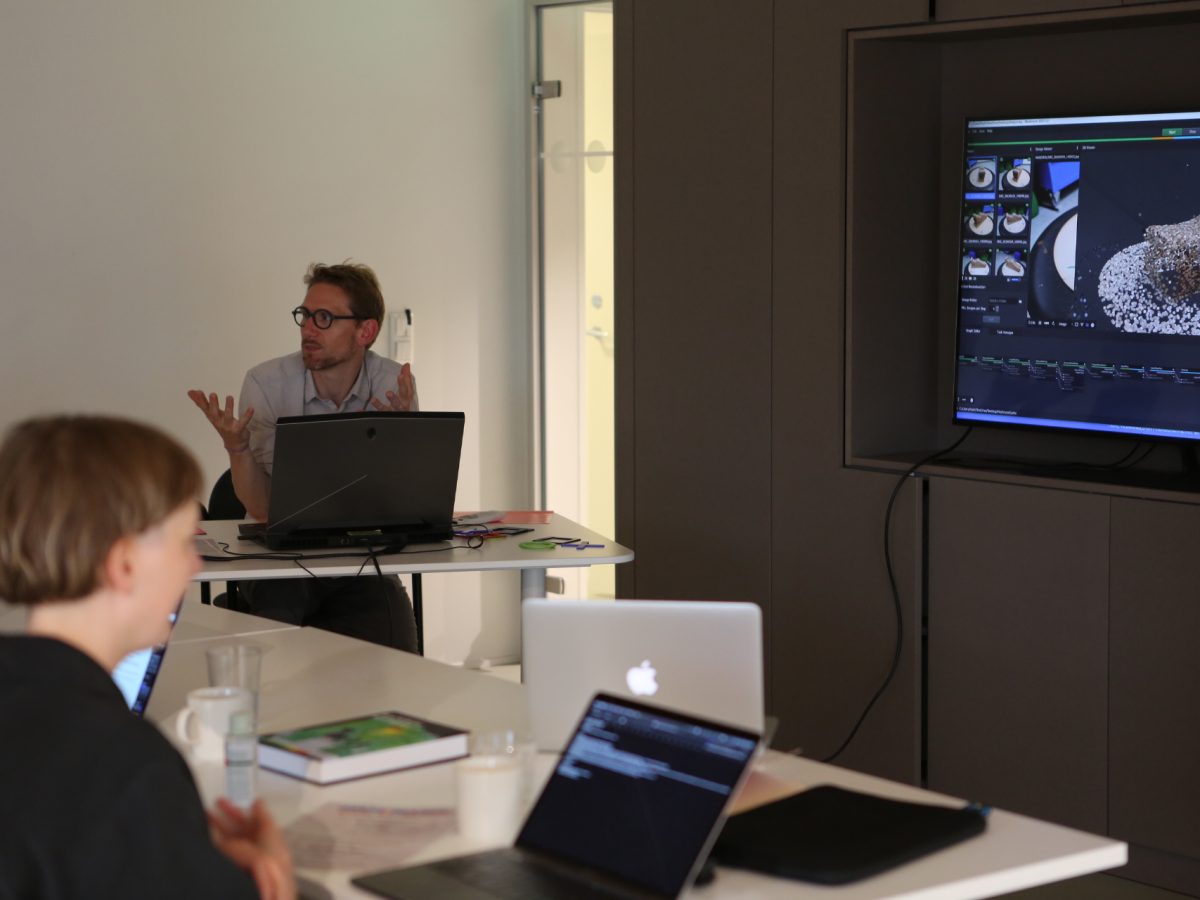Photogrammetry workshop at BEK
Published
This week, eight participants are assembled on BEKs premises for part one of the workshop “Landscape as Material Witness”. In the inaugural part of the workshop, Fredrik Salhus gave an introduction to photogrammetry as a tool for artists.
The participants have been presented with ways to use photogrammetry when mapping and investigating objects or smaller defined areas. As a technique, photogrammetry is used to measure the form, size and location of photographed objects. Photographing an object from various angles and processing the images in designated software makes it possible to create a three-dimensional model – albeit one which also renders the surface of the object, not only its spatial properties. As a result, photogrammetry has a wide range of possible applications. The reconstructed objects with their textures and colours may be animated, exported as still images or incorporated in other visual material.
During the week, workshop participants have experimented with practical photogrammetry and been introduced to software such as Meshroom, Meshmixer and Blender. Participants have spent time getting to know each other´s artistic practices and discussing broader issues in preparation for the second part of the workshop, scheduled for February 2022. They have also read and discussed a chapter of Susan Schuppli´s book Material Witness.
Schuppli will lead the second part of the workshop come February, looking at how visual traces in a landscape can be read and how these traces can function as witnesses of ongoing processes like destruction of nature, climate changes, or political and economic transformations. This workshop emerges from ideas developed in Schuppli´s Material Witness project, which explored the various ways in which entities register evidence of external events – from airborne radioactive contaminates at Chernobyl to an oil spill in the Gulf of Mexico – as well as the broader frameworks, which determine which kinds of evidence matter and who or what is considered a legitimate witness able to ‘speak’ on behalf of such events.
The workshop is organised in collaboration with the research project “Illuminating the Non-Representable” at Department of Design, Faculty of Fine Art, Music and Design (UiB), led by professor Hilde Kramer.
The workshop is initiated and led by Åse Løvgren, project developer at BEK. Løvgren is an artist working in a wide range of strategies and formats where collaboration is often at the core. Current project is “The Valley”, in collaboration with artist Stine Gonsholt. Using a small place on the west coast of Norway as a prism, they look at visible local traces of current transitions in global production and economy, and how this alters our understanding of place.
About the participants:
Ingrid K. Bjørnaali is a video artist from Kristiansand, based in Oslo. She recently finished her MFA studies at the Oslo National Academy of Fine Art, partially spent on exchange in Helsinki at the Taideyliopiston Kuvataideakatemia. In her video practice, she captures natural landscapes via various camera technologies and software types, proceeding to work with these bits and pieces of nature based on their virtual outcomes. Her works explore the omnipresence of the digital in our experience of the world as well as the inability of technology to adequately comprehend the natural.
Nayara Leite is a Brazilian artist and writer based in Bergen, Norway. She holds an MFA from the Bergen Art Academy and an MA in Photojournalism & Documentary Photography from the London College of Communication. Leite works across analogue photography, performance, writing, installation and video. Through autobiographical narratives, Brazilian political news, letters to close friends and archival material, she produces a portrayal of the reality in which the LGBTQ+ community lives in Brazil and in Norway.
Jenny Berger Myhre is a multidisciplinary artist working with sound, video and photography. Her work explores and exposes the personal in an honest and curious manner. Coming from the DIY scene in Oslo, her approach to music making is versatile and open, with an apparent love for the unpolished – referencing the electro-acoustic music tradition as well as experimental pop. She is a long-time collaborator of Jenny Hval, working with videos, photography and live performance. Berger Myhre has a BA in Musicology from the University of Oslo and Goldsmiths College in London, as well as Live Electronics from the Norwegian Academy of Music.
Arild Våge Berge`s practice includes photography, sculpture, text and video. His works explore topics like archiving, technology, landscape and temporal narratives. Våge Berge´s artistic gestures include appropriation of documents, questioning the status of objects and challenging the way we understand landscapes. Among his recent productions are object-based sculptures that investigate the nature/culture relationship, material recordings of industrial objects and a commissioned work that explored the landscapes and industries of Sogn og Fjordane. He completed his MFA in Fine Art in 2017. In addition to his artistic practice, Våge Berge co-owns the artist book publishing house Topos Bokforlag.
Fredrik Rysjedal is a comic artist and animator, working with printmaking and artist books, video performance and digital comics. He is also the editor of Numer, a magazine on drawing, illustration, and book art. Rysjedal is engaged in a work project as part of Hilde Kramer´s research project Illuminating the Non-Representable at KMD, where he does research on sound as illustration.
Robin Everett graduated from the Bergen Academy of Art and Design (MA, 2018) and The Glasgow School of Art (BA, 2012). Recent exhibitions include PODIUM (Oslo), Isotop (Bergen), Lofoten International Art Festival, Augusta (Helsinki), Tag Team (Bergen), and Studio17 (Stavanger). Alongside this he is an active member of Mustarinda Association (Finland) and runs the residency program, spending several months a year there. Everett was born in the UK and currently lives and works in Bergen, Norway. His practice employs video, text, and sculpture as equal considerations of time-based media to ask how oblique understandings and new knowledges manifest from emerging technologies.
Emilija Škarnulytė is a nomadic visual artist and filmmaker. Blending fiction and documentary, she explores topics from the cosmic and geological to the ecological and political. In her video installations and films, Škarnulytė scrutinizes the veil of infrastructure, invisibly regulated by larger systems of power. She looks into core questions undergirding the current geological period, wherein human activity continues to produce worldwide ecological problems. Her works were presented in several group exhibitions, including Hyperobjects at Ballroom Marfa, Texas; Moving Stones at the Kadist Art Foundation, Paris; the first Riga International Biennial of Contemporary Art; and Bold Tendencies, London. She had a solo show at Künstlerhaus Bethanien in Berlin. Škarnulytė was awarded the Future Generation Art Prize 2019 and has represented Lithuania at the XXII Triennale di Milano. Her films have been screened in film festivals worldwide, and she co-directs Polar Film Lab, a collective for 16mm analogue film practice located in Tromsø, Norway.
Vilde Salhus Røed is a visual artist with a master’s degree in fine art from Bergen University of Arts and Design (2008), specialising in photography. She works with storytelling, often employing photography as a lens and a tool to investigate reality, including imagination, abstract ideas and the untrue. In several of her project, she´s investigated stories from archives through photography and other “documents”, placing personal narratives against the backdrops of cultural history and socio-political currents. Vilde is fascinated by the interplay between memory and imagination, and how collective memory is created. She explores this by looking at how visible and invisible, true and untrue stories are told and retold. While she often works photographically, her works are just as likely to consist of video, sound, text, books or other technologies as they are to be in the form of photographs.



